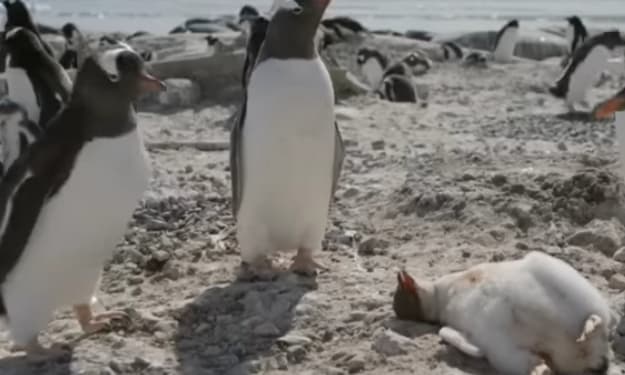What Is the world like under the sea?
unfolding shops acclimated to live aquatic, produce thick aquatic meadows that offer niche and nursery grounds for numerous marine organisms. Mangroves, with their unique root systems, stabilize plages and give a haven for juvenile fish and pets.

The world beneath the ocean is a realm of astonishing diversity, bulging with life and natural beauty that frequently surpasses our wildest imaginations. Covering over 70 of the Earth's face, the abysses are home to an array of ecosystems and brutes, each uniquely acclimated to their aquatic terrain. From the sunlit shoal to the inky depths of the benthic plains, the marine world is a mosaic of vibrant colors, crazy forms, and intricate ecological connections.
Coastal and Shallow Waters In littoral areas and shallow waters, sun penetrates the ocean face, supporting a rich diversity of life through photosynthesis. Coral reefs, frequently appertained to as the" rainforests of the ocean," are among the most biodiverse ecosystems on Earth. Composed of calcium carbonate structures erected by bitsy coral cysts, these reefs host thousands of species of fish, pets, and marine shops. The pictorial colors of coral reefs come from the symbiotic relationship between coral cysts and zooxanthellae algae, which give the corals with food via photosynthesis. Seagrass beds and mangrove timbers are also vital littoral ecosystems. Seagrasses,
unfolding shops acclimated to live aquatic, produce thick aquatic meadows that offer niche and nursery grounds for numerous marine organisms. Mangroves, with their unique root systems, stabilize plages and give a haven for juvenile fish and pets.
These littoral zones are pivotal not only for their biodiversity but also for their part in guarding plages from corrosion and acting as carbon cesspools. Open Ocean Moving down from the seacoast, the open ocean, or pelagic zone, spans vast distances and varying depths. This zone is characterized by its vast fields of water,
where the only visible life might be seminaries of fish or the occasional end marine mammal. Despite appearing empty, the open ocean supports a complex food web, from bitsy plankton to large bloodsuckers like harpies and jumbos. Phytoplankton, the bitsy photosynthetic organisms that float near the ocean's face, form the foundation of the marine food web.
They're responsible for producing a significant portion of the Earth's oxygen and serve as the primary food source for zooplankton, small fish, and other marine brutes. Larger fish, marine mammals, and seabirds depend on these lower organisms, creating a delicate balance in the ecosystem. The Twilight Zone Below the sunlit epipelagic zone lies the mesopelagic, or twilight zone, extending from about 200 to 1,000 measures( 656 to 3,281 bases) deep.
Then, sun diminishes and temperatures drop, creating a dimly lit terrain where numerous organisms have developed unique acclimations to survive. Bioluminescence is common, with brutes like lanternfish and certain doormat producing their own light to attract prey or communicate. Life in the twilight zone is acclimated to the high pressures and low light conditions. numerous fish have large eyes to maximize available light, while others have specialized light organs.
The diversity of life then includes everything from glutinous zooplankton to raptorial fish, all playing pivotal places in the deep- ocean ecosystem. Abyssal and Hadal Zones Deeper still are the benthic and hadal zones, stretching from 4,000 measures( 13,123 bases) to the ocean's deepest fosses, similar as the Mariana Trench, which reaches depths of over 10,000 measures( 32,808 bases). These regions are characterized by complete darkness, frigid temperatures, and immense pressure. Despite these harsh conditions, life thrives in colorful forms. Abyssal plains, the vast, flat areas of the deep ocean bottom, are dotted with hydrothermal reflections and cold seeps, where geothermal exertion releases chemicals into the water. These reflections support unique ecosystems grounded on chemosynthesis, where bacteria convert chemicals like hydrogen sulfide into energy. Giant tube worms, bones
, and shrimp are among the organisms that thrive around these reflections, forming a vibrant community independent of sun. Marine Biodiversity and Acclimations Marine biodiversity is astounding, with millions of species acclimated to a wide range of environmental niches. Fish parade an inconceivable variety of shapes, sizes, and actions. From the small, various reef fish like clownfish and angelfish to the enormous Goliath wolf, the largest fish in the ocean, the diversity is remarkable.
Pets similar as octopuses, squids, and crustaceans showcase an array of acclimations, from the disguise capacities of the octopus to the complex social structures of certain shrimp species. Marine mammals, including dolphins, jumbos, and seals, are well- acclimated to their submarine life. jumbos, for illustration, have evolved effective styles of communication through echolocation, enabling them to navigate and quest in the dark depths.
Seals and ocean Napoleons are acclimated to both land and ocean, with streamlined bodies for swimming and the capability to come ashore to rest and breed. mortal Impact and Conservation Despite its hugeness and adaptability, the marine world is decreasingly hovered by mortal conditioning. Overfishing, pollution, climate change, and niche destruction pose significant pitfalls to marine ecosystems. Coral reefs are particularly vulnerable to rising ocean temperatures and ocean acidification, which beget coral bleaching and weaken the reefs' structural integrity.
Plastic pollution, which affects all situations of the ocean, is ingested by marine life, leading to health problems and indeed death. Conservation sweats are critical to conserving the health of our abysses. Marine defended areas( MPAs), sustainable fishing practices, and pollution reduction enterprise are some of the strategies being employed to guard marine biodiversity. Public mindfulness and global cooperation are essential in addressing these challenges and icing that unborn generations can continue to marvel at the prodigies beneath the swells.
In summary, the world under the ocean is a vast, dynamic terrain filled with different ecosystems and a myriad of life forms. From the sun- drenched shoal to the deepest fosses, the ocean is a testament to the rigidity and adaptability of life. As we continue to explore and understand this aquatic world, it becomes decreasingly clear how vital it's to cover and save our abysses for the health of the earth and unborn generations.
About the Creator
Enjoyed the story? Support the Creator.
Subscribe for free to receive all their stories in your feed. You could also pledge your support or give them a one-off tip, letting them know you appreciate their work.





Comments (2)
Hey, just wanna let you know that this is more suitable to be posted in the Earth community 😊
Even though it seems marvelous, that world is dangerous. Thanks for sharing!